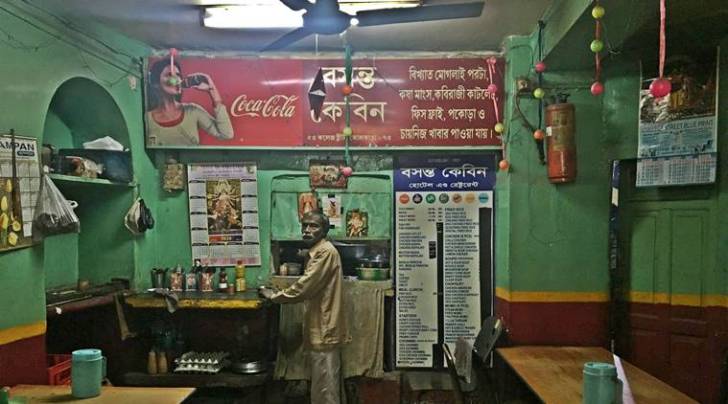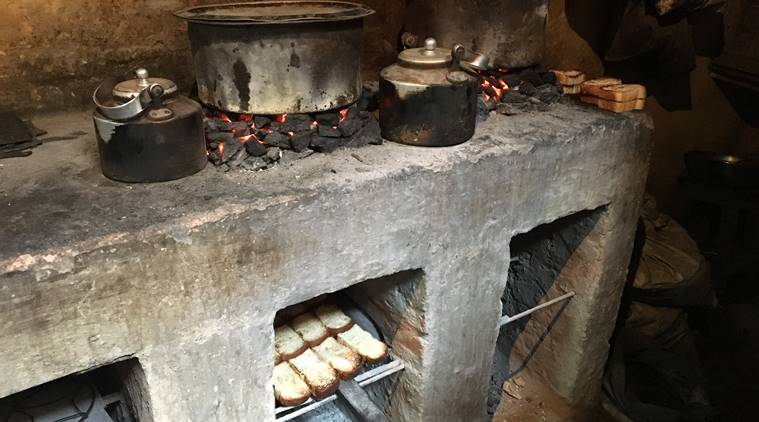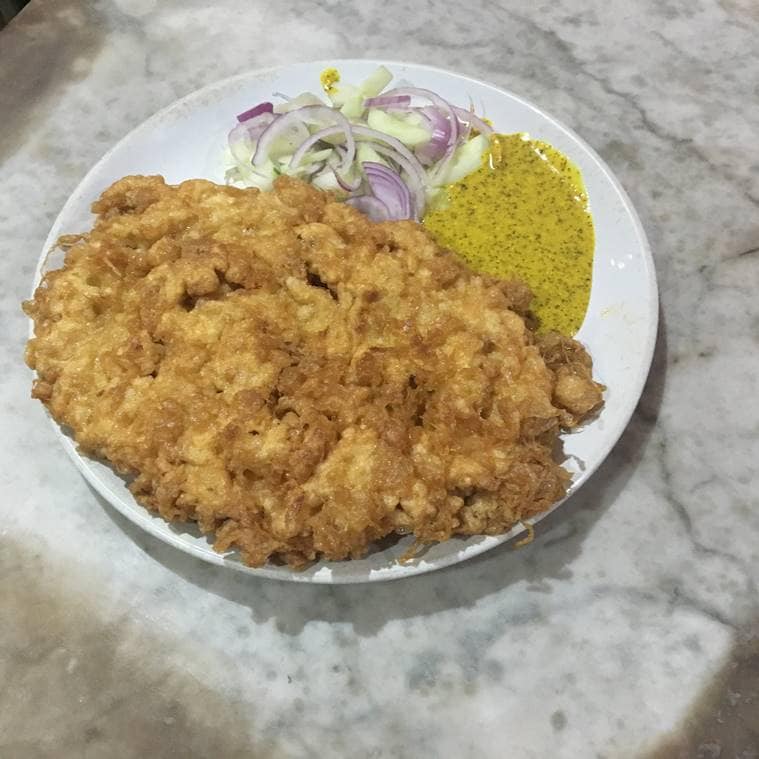 Basanta Cabin (Photo: Neha Banka)
Basanta Cabin (Photo: Neha Banka)
Kolkata’s identity has, in many ways, been inextricably associated with the city’s vibrant food culture. However, even within the macrocosm of culinary diversity, the city’s cabin restaurants set themselves apart.
There are varying accounts of how these small local eateries, which first sprang up all over the city in the 19th century, came up. According to Utsa Ray, author of Culinary Culture in Colonial India (2014), these public eateries, the first of their kind in the country, allowed the common man to discover the “pleasures of eating out”. Consuming “new food”, writes Ray, “was not always possible within the domestic space”. According to Ray, hotels “formed a convenient locus for those who could easily gorge into a chicken cutlet without being concerned about polluting their home.”
By the 1940s, eateries selling cheap meals, teas, coffee and quick bites like toast, targeting students and others on low budgets, opened across the city. Some also sold affordable plates of rice and dal.
Cabin restaurants get their name from their floor plans, which would be divided into wooden cubicles – or cabins – with curtains or wooden saloon-style doors for privacy. While this was valued by couples wanting to avoid prying eyes, cabins once also served another purpose. Many cabin restaurants opened in the neighbourhood of north Kolkata, near educational institutions and were frequented by college students. Several individuals associated with the freedom struggle, who were also students at these colleges, would gather at these restaurants, taking advantage of the privacy the closed cabins provided, to plot against the British. Later, the establishments were also used by students associated with the Naxalite movement.
 Toast is still made below the open stove at Favourite Cabin. (Photo: Neha Banka)
Toast is still made below the open stove at Favourite Cabin. (Photo: Neha Banka)
Most of these cabin restaurants continue to be family-owned, passed down from generation to generation. The stories of Bengal’s icons associated with the freedom movement, like Prafulla Chandra Ray, Surya Sen and Netaji Subhas Chandra Bose, who found refuge behind the cabins and the restaurant walls have been passed down as well.
The 102-year-old Favourite Cabin is one such establishment. A stone’s throw from College Street, it was set up in 1918 as an eatery for tea and toast by two brothers, Nutan Chandra Barua and Gaur Chandra Barua. It was frequented by revolutionaries as well as literary icons who spearheaded the Kallol Movement of 1923-35, like Kazi Nazrul Islam, Bengali writer Premendra Mitra and author Shibram Chakraborty. A framed photograph of Nazrul Islam hangs over what was once his regular table, along with a black-and-white image of Rabindranath Tagore. Inside the kitchen is a section in the wall, now boarded, that owner Saikat Barua, 53, says is from where the revolutionaries would escape to avoid arrest by British police officials.
 Kabiraji cutlet (Photo: Neha Banka)
Kabiraji cutlet (Photo: Neha Banka)
Barua, who is the great-great grandson of the founders, says that their toast is still prepared in the same way as when Favourite Cabin was first established. Bread slices are placed on an iron rack in the open kitchen, just below a charcoal-fired open stove that is used to heat milk and water. The heat of the stove, says Barua, slowly toasts the bread.
The diverse communities that made the city of Calcutta their home over the centuries, also contributed to create, develop and influence the city’s unique food culture. Several food items served at these cabin restaurants were a combination of Indian and European cuisines adapted for the local palate, such as the popular kabiraji cutlet, believed to have been created in in the kitchens of the 118-year-old Dilkhusha Cabin. Today, it is sold across the city. A dish of crumb-fried mutton, chicken or fish in an egg batter, it was originally called “coverage cutlet” because it is covered in batter and crumbs. “Kabiraji” is believed to be a mispronunciation of the word “coverage”. Another story claims that the dish was named after Bengal’s iconic kabi or kavi (poet), Tagore.
Cabin restaurants were casual spaces, selling tea and snacks, and usually opened during the afternoons, running late into the evening. Rising expenses have compelled them to modify their operations. At the 130-year-old Basanta Cabin, near College Street, once a favourite haunt of the artist Ganesh Pyne, the wooden cabins have been replaced with small tables and chairs. During the lunch hour, some customers opt for plates of rice, dal and chicken, while others sit with cups of tea. “Many cabin restaurants have started serving rice and dal due to financial reasons,” says Indrajit Lahiri, 41, author of the book Food Kahini (2019). Customers sitting for hours with cups of tea and toast is not economically-beneficial for owners and the menus at many cabin restaurants have expanded.
Aloke Kumar, 56, professor of communications at Calcutta University, has witnessed the city’s dining sector change over the decades. “The concept behind cabin restaurants was to have privacy; for lovers and for womenfolk. You were never disturbed and were never asked to leave,” says Kumar. Once the curtains of the cabins were drawn, customers could spend hours, uninterrupted, over their meals and conversation. Kumar believes that the decline of cabin restaurants began with Independence. During British rule, the Calcutta Municipal Corporation did not allow street-food hawkers, says Kumar. Foods like phuchhkas and jhalmuri that are now associated with the city and its street food culture, were brought by refugees who sold them at low prices. For many of these cabin restaurants, competing with these street foods became an impossible task, leading to the decline of many such establishments across the city.
Still, nostalgia and the quality of food continue to bring customers to these establishments. “I’d prefer going to a cabin for a fish fry any day. It’s value for money and good food,” says Lahiri. Those seeking remnants of Old Calcutta in a rapidly changing city may just find them here.